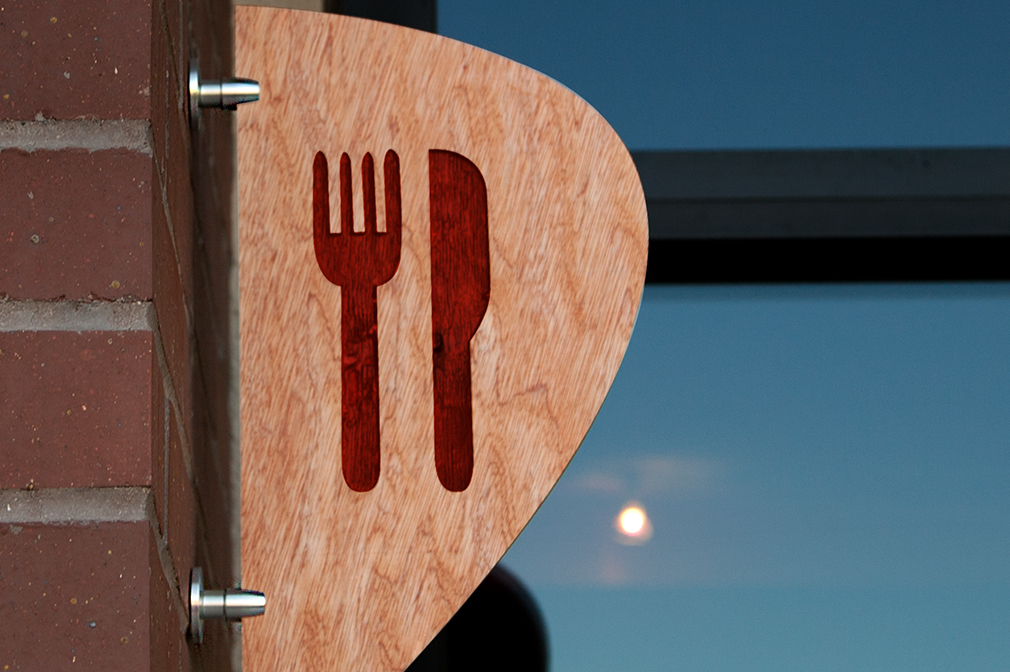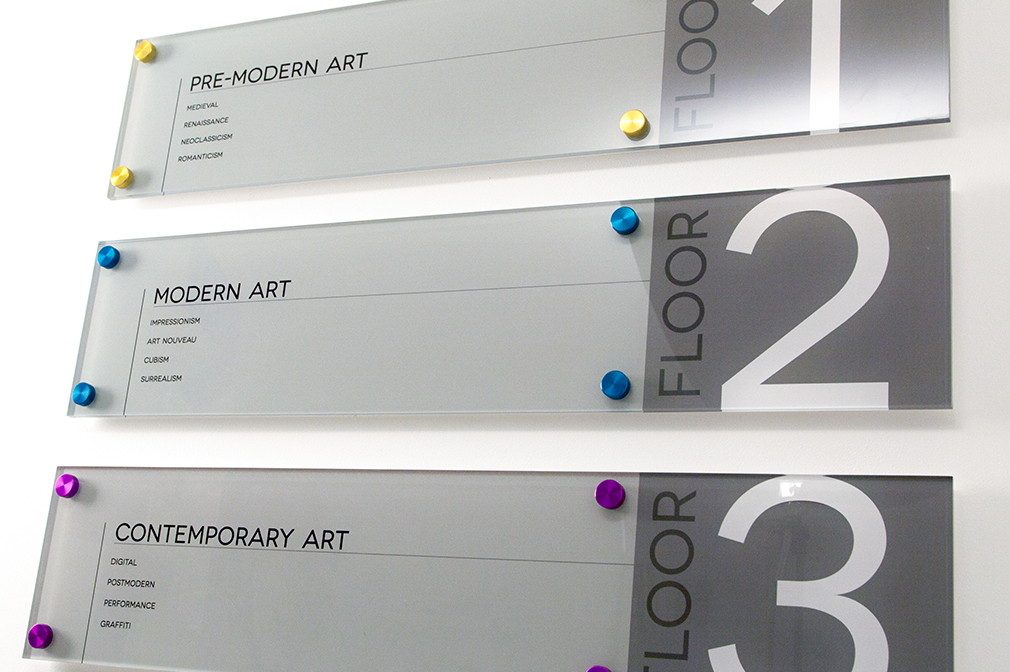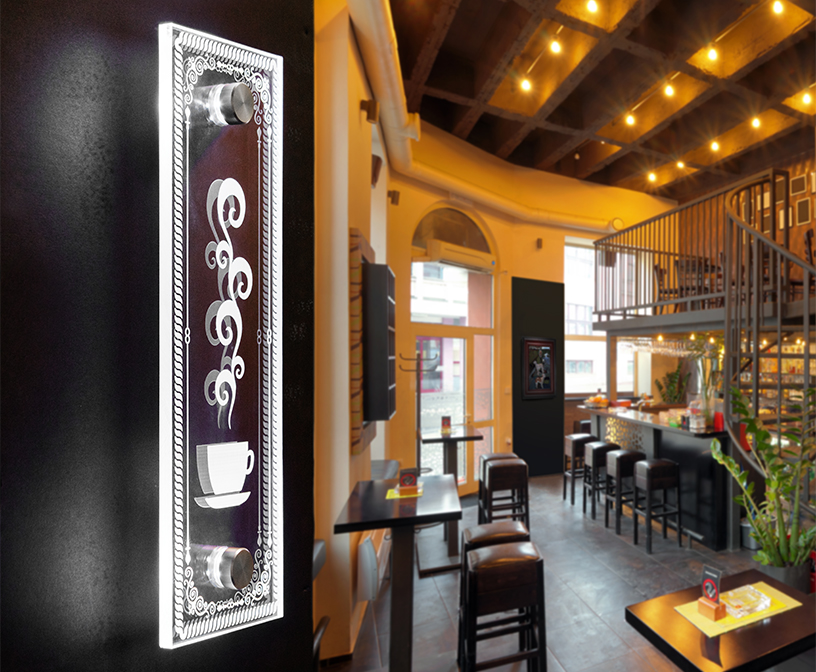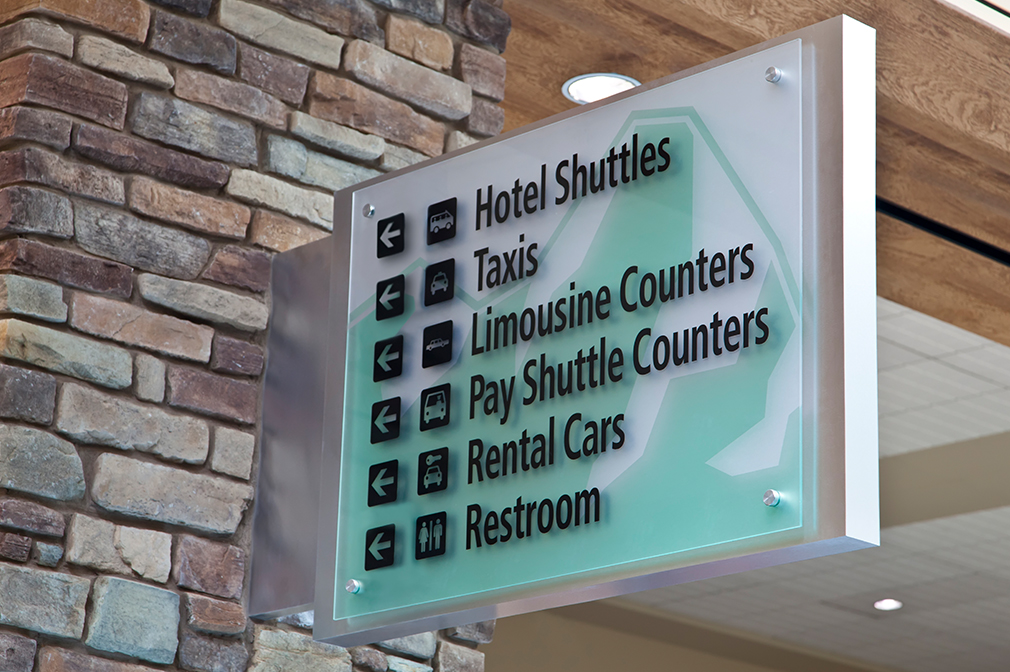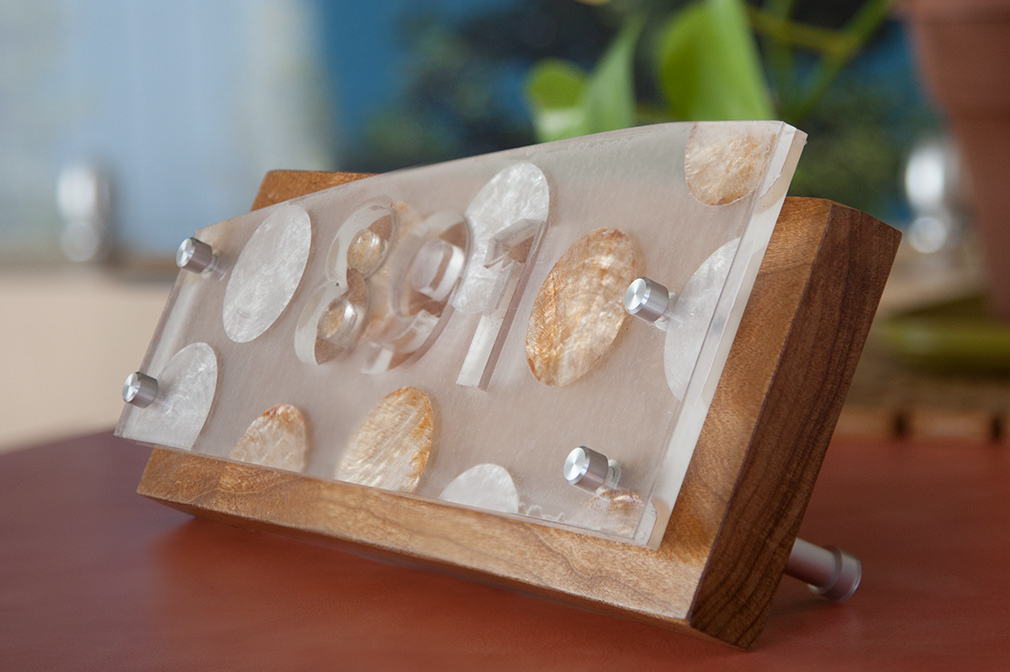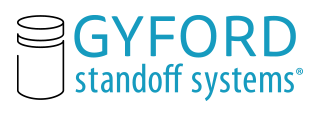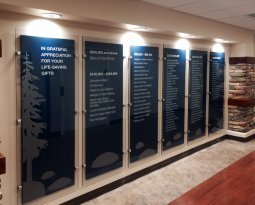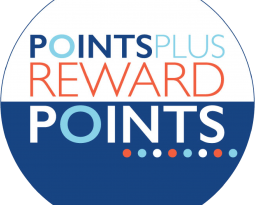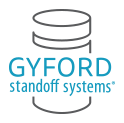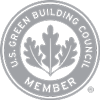During 2016, many engravers began to widen the array of services offered at local shops. Below, the author will discuss how engravers are beginning to migrate from an engraving and personalization only model into the addition of the ever expanding sales channels of signage. A popular equipment addition has been adding sublimation printers and presses which have widely been used to make plaques as well as signage, a likely cross-over. As technology has become more affordable, techno-savvy operators in the engraving industry have migrated toward laser and CNC router tables as well. This short but stout equipment list has enabled local engravers and typography experts to quickly enter into the signage market.
Everyday Signage
Everyday signage can be thought of as utilitarian signage that serves vital roles in commerce as well as the quality of life in any municipality. Wayfinding signs for buildings are a great example of everyday signage that engravers will be familiar with. A typical wayfinding sign package can include up to 28 different types of signs (IBIS World, 2015). While some may be locked into a certain style per ADA compliance, others offer the freedom to a designer to dabble with new technologies.
Hotels
A quick case study of a hotel environment shows how important signage is and also illustrates the need to continually update the look and style of signage so that the signs stand out and do not blend into the environment. The simple arguments are based on cost saving and promoting return visits by guests. Hotels and resorts are labor intensive as they are largely based on service. In fact, in this environment over 25% of revenue is allocated toward wages (IBIS World, 2015). That’s $47 Billion a year! Every time a guest stops an employee for directions on the property, it costs the hotel money by increasing the labor units used per guest.
Signage needs to standout and help guests to be self-sufficient. Regular guests that are accustom to the property may begin to lose existing signage as it fades into their peripheral vision as the property becomes more familiar. Updating signage regularly with different shapes, styles, and colors is a sure way to get all guests to notice the signs and have a seamless experience when needing to take advantage of a service for the first time.
Partnering with Builders
Offering wayfinding signage is a wonderful way to step into the signage arena. These signs range from simple to ornate. However, every new building needs wayfinding signs from hospitals to hotels. Additionally, these signs are updated regularly due to either new interior design of the property or the relocation of the areas around the property. Using technology for the expansion of services for engraving shops.
With new construction building permits rising with an economic upswing, linking up with home builders and architects is a great way to open new routed-signage sales channels. Making street number or bathroom sign samples is a small scale way to show off what a routing table can do, and because it is automated, the operator doesn’t have to stand over the work while it is being produced.
Get the word out by distributing samples advertising that your shop now has new equipment. The biggest challenge that purchasers face in a small market is lack of vendors. Becoming a one stop shop for a builder guarantees repeat business.
Retail Opportunities
Large retailers change out signage frequently but smaller chains may only change out signage once a month. It all depends when the next sale is or when the store wants to showcase a new product or line. Creating a colorful yet vague sublimation sign like “Men’s Shirts on Sale” becomes a lasting piece of equipment that the store can use more than once. When these durable signs are paired with quick change hardware the store now has a repeatable, scalable signage system that may be repeated throughout chains.
Showrooms
Engravers that are entering into signage markets should also display sample signage in their lobbies. Turning lobby and reception areas into showrooms has been a growing trend with printers and sign shops. This gives businesses a chance to have better conversations with customers and created educations opportunities.
Top Signage Technology
Below the author will briefly touch on some of the most popular, simple, and small footprint signage technology equipment that may easily be added to a workshop. These machines may be purchased in several format sizes and may be used for small custom sign runs. For example, creating small quantity runs on colorful plaques, awards, and custom signage for corporations and retailers.
Sublimation
Sublimation is a process of transferring printed material onto a polyester or polyester coated material using heat and pressure. This process uses certain types of inks and typically the heat can run up to 400 degrees Fahrenheit. This process is not only used for flat surfaces but may also be used to adorn curved surfaces (Chandler, 2007). Curved glass, acrylic, and ceramics may be used to create unique signage in this way as well.
Routing
Large format routing in the past was confined to complicated jigs and an operator with a steady hand. With the influx of affordable CNC routing tables, signage may now become more detailed and doesn’t require the hands of a surgeon. These routing tables range from a couple thousand dollars into the quarter million price range depending on the size and capability of the machine. Users have a wide range of bits to choose from to give a designer look within the lines being engraved.
Laser Etching / LED Technology
Laser etching acrylic panels has become a favorite for restaurants and other low-light venues as patterns and artwork that are laser etched will catch light and illuminate when the acrylic is lit with LEDs. This also creates a low cost change-out signage solution as most small sign sized laser etchings run about $20-$30. At this cost, the end-user can create an etched sign for every sales promotion throughout the year. This technique is also becoming popular in large buildings as light draws the attention of the eye in the same way that lit exit signs do.
References
Chandler, S. (2007). Creating Indelible Images. Ceramic Industry, 157(4), 30-32
IBIS World. (2015). IBISWorld Industry Report 72111 Hotels & Motels in the US.
